World war 1 aircraft
 |
Albatros D.Va Airfix used to produce a nice 1/72 scale kit of this streamlined German fighter. Typical of the period where also the nice paintings that came with the packaging (which was a cardboar/plastic blister in this case). (Airfix kit painting - the Aviation Buffs Archive) |
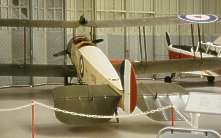 |
Avro 504K 'D8781' This clean Avro is part of the collection at Duxford's Imperial War Museum. (picture provided by Stef De Wit) |
 |
Avro 504K F9753, RFC Another of the nice 1/72 kits Airfix used to make back in the seventies. (Airfix kit blister painting - the Aviation Buffs Archive) |

|
Breguet XIV A2, BRE-5 of Belgium's Aviation Militaire This large 2-seater came in different versions including the A2 artillery spotter and reconnaissance plane and the B2 bomber. After the war, it formed the basis for several passenger or mail-carrying versions. |
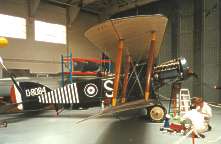 |
Bristol Fighter F.2B 'D8084' Although a two-seater, the Brisfit was flown as a true fighter and it achieved numerous successes in dogfights against smaller, more maneuvrable single-seaters. The example shown is undergoing engine maintenance to keep it airworthy. (picture provided by Stef De Wit) |

|
Fokker D.VII 621, Swiss Air Troops (1922)
One of the best aircraft of the Germans during the first world war, it was taken on charge by most of the allied armies after the armistice. Such was the build quality, that several examples served into the thirties. |

|
Hanriot HD.1, Italian Air Force 81°Squadriglia Caccia, VI Gruppo Aeroplani (Nov.1917)
Outclassed by the contemporary Nieuport designs, the Hanriot HD.1 was used only in small numbers by the French Army Air Corps. Both Belgium and Italy, however, became very interested in the design which they both used in large numbers during the war until the early twenties. |

|
Nieuport X AR, French Army Air Corps (1915).
This 2-seat reconnaisance plane, quite good in its own right, formed the basis for the smaller single-seat Nieuport XI Bébé. |

|
Nieuport XVI Bébé N1495 'Fox-Trot', Belgian Army Air Corps
The Nieuport XVI was a higher-powered variant of the succesful Nieuport XI. Due to the higher power, it was more difficult to fly and hence less popular than the model XI. |
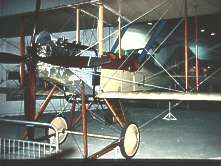 |
Royal Aircraft Factory B.E.2 This so-called 'Bleriot-Experimental No.2' had nothing to do with its French forebear other than the tractor propellor layout. It was a 2-seat reconnaissance aircraft of doubtful qualities, yet several versions were produced during the early war years. |
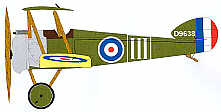
|
Sopwith F1 Camel D9638, RFC (1918)
With the Camel, the British Sopwith company produced a very powerful and maneuvrable fighter. It was rather difficult to fly, but in the hands of a capable pilot it became a deadly weapon. |

|
Spad S.VII N6210, Royal Naval Air Service
Designed around the new V-8 Hispano-Suiza engine, the Spad S.VII soon became known as being one of the most stable gun platforms flying around during the first world war. Despite some structural weaknesses, it was highly popular amongst its pilots. |
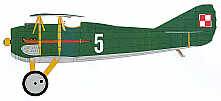
|
Spad S.XIII, Polish Air Force
(1919)
An extrapolation of the earlier S.VII, the high-powered heavily armed S.XIII was one of the more succesful aircraft at the end of world war one. No wonder then, that it continued to serve in a lot of post-war air arms, some aircraft soldiering on until the late twenties. |

|
Voisin LA III, V-86 of the French Army Air Corps
Looking already old fashioned at the start of hostilities, the LA III was the first aircraft that could lay claim on an air victory when the French observer-pilot team of Lang and Qenault shot down a German aircraft. |
If you entered this page directly and want to check out the rest of my website : click here to go to my Homepage. |
Last update : 30/09/00 - (c) Guido Van Roy